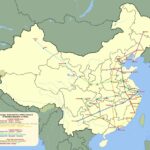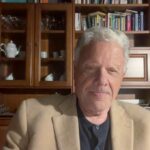U-kraina means “on the border” and never a name of a country expressed so completely its destiny. On the border of major empires, Austro-Hungarian and Poland on the West, Russia on the East, Mongols and Turks on the South. On the border of independence, so many times hoped, and always in danger. On the border of OTAN, on the border of EU, on the border of freedom. So large and beautiful country, with its wide space, large river Dnieper and its black land, someone says from the blood of 14 million civilian dead here from Stalin Holodomor (famine) of kulaki (farmers), until Hitler massacre of Jewish and Polish prisoners. Remarkable the book of Yale’s Timothy Snyder “Black land”on years between 1930 and 1945 in this country. Along the river crossing all the country, large more then France, wonderful forest and unforgettable plain covered by sunflowers on the right side, large industrial soviet complex on the left side, give to you the flavour of Ucraina complex history between rich agricolture and forced industrialisation. From elegant baroque church in the cities of North-West (Lviv) flowers of catholic Polish and Austrian tradition, to coal bacin of South -East in Karkhov, to the jewel of Potiomkin and Cathrine II, Odessa on Black Sea, Ucraina is a true Central Europe and Russian art book, again a wonderful synthesis of European traditions
Kiiv in Ukrainian language, Kiev in Russian is the Rus kingdom origin of future Russian people, a mix of Viking immigrants and slavish tribes, influenced from Orthodox religion of bizantine Constantinople and always fighting with Tatars (Mongols) arriving from Asia. Lithuanian kingdom and then Polish-Lithuanian empire was pressing from North-West to join Black Sea. Ucraina was always contended by those empires after 1700, and before crossed by Bulgarian, Gothes, Huns, Hungarian, Mongols, Peceneghi. Notwithstanding all this turmoil, an Ukrainian identity was consolidating also as a reaction to all these populations immigrating in search of fertile land. A local group was also coalescing around Kosak tribes, leaded by an ataman, from time to time rebelling against Poland or Russian , on the right and on the left side of Dnieper. The Russian colonisation of admiral Potiomkin, in the name of Catrine the Great in 1750 was like the opening of West in USA for the Moscow empire, battling 13 wars with Turks and Tatar in Krim peninsula. The complex relationship with Russia has been always difficult: from one side the big Jewish communities in Odessa, also an Neapolitan city from its founder, and a French city from its famous Governor Richelieu, had a cosmopolitan influx on local intellectuals and rich farmers. Polish and Austrian influxes were driving also to Central Europe. From the other side the enormous power of Orthodox church, whose jewels are in the “lavra” and gold churches of Kiev, was strictly connecting Ukrainian and Russian cultures. So this long time conflictual relationship is also at the basis of present situation, when in 2014 Krim and Donbass region have been separated from the new independent State born from the collapse of Soviet Union.
Ucraina was independent very shortly after 1918, like the Baltic States, but then joined the Soviet revolution and again was included in USSR in 1922, The new independence of 1990 was again generating instability along the big river, with right side looking to Europe and USA and the left side looking to Russia. Always on the border of something, in this case of independence and in between new Russian Federation and EU, the long desired freedom and independence remain fragile, conditioning an economy which could be very important for the rich agricolture and coal resources, and could be opened to a lot of tourism for its beauties, so well described as a nature in the 2006 American movie “Everything is illuminated”, a real small masterpiece catching with few characters the main roots of Ukrainian culture. On the border.



